Over the past four days I have been out of communication range and attending an Alaskan Geographic course on Climate ChangeA statistically significant variation in either the mean state of the climate or the mean variability of the climate that persists for an extended period (typically 10 years or more). Climate change may result from such factors as changes in solar activity, long-period changes in the Earth's orbital elements, natural internal processes of the climate system, or anthropogenic forcing (for example, increasing atmospheric concentrations of carbon dioxide and other greenhouse gases).. The course was fantastic! Not only was the whole experience organized and run by Sarah Crowley and our guide Margi, who both did a splendid job of making sure everyone was engaged, fed, and safe, we also were introduced to one of the most respected and beloved ecologists and climate change scientists in Alaska, Terry Chapin! The conversations were inspiring, the lessons were current and relatable, and we experienced everything that Denali National Park had to offer.
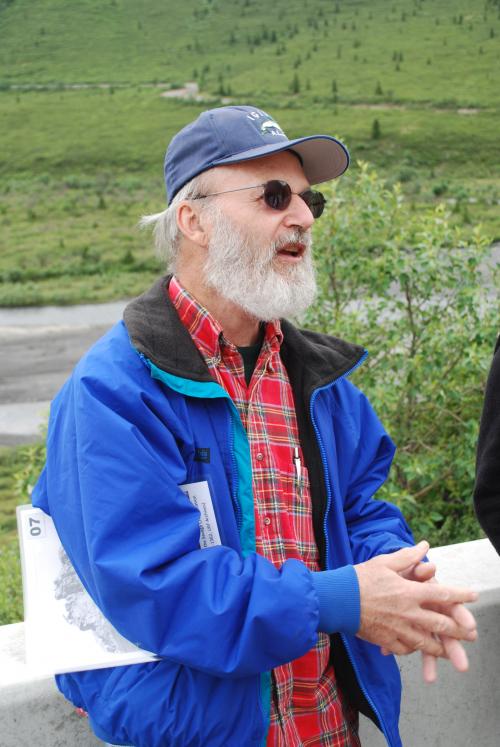
During the course we received some first hand experience with the changing landscape through hikes and direct observations. We saw how the shifting patterns in the vegetation, due in part to the higher temperatures and melting of permafrost, are extending the growth of some willows and spruce trees. We also were treated to photo pairs. These are images that have been taken of the same location but 40 to 50 years apart. When we added on a current photo taken during the course it was moving to see the changes, and at times the lack of change.
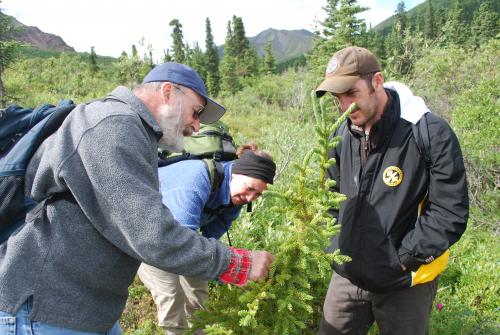
One day was spent hiking over glacial moraines and observing how spruce forests extend their populations by using the wind to help spread seeds. We cored several spruce trees and discovered that an 80-year-old individual is not always larger than younger trees in a different area. The rings of the trees tell a story of good times and other times when the plant is limited by frozen ground and nutrients that may not be available. Digging into the tundra, we saw the dark carbon rich soil sitting on top of a rock hard layer of permafrost, that at times is no more than several inches below the surface.
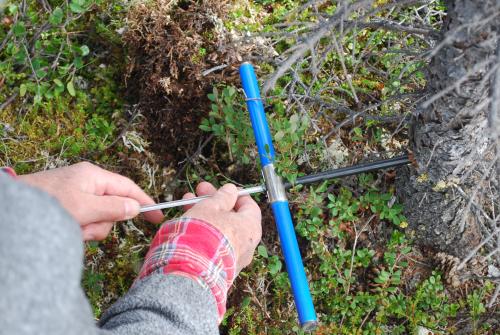
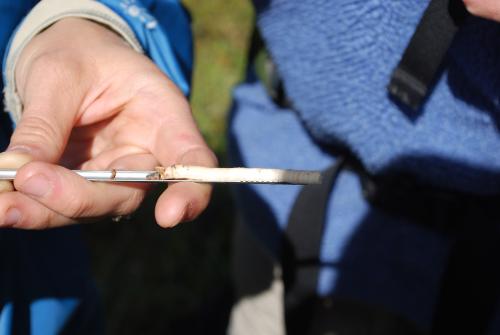
Some of the lessons we covered included looking at the carbon exchange between the atmosphere and the ground. Using the same equipment that Dr. Natali relies on for her experiments, we measured CO2 flux and saw how plants, in the presence of light, take in carbon dioxide during photosynthesis, but also how CO2 is released back to the air in the process of respiration during decomposition. Point Framing was another procedure that was explained by Terry Chapin showing how scientists look at a plot of vegetation and can determine the percent of coverage for each species found there, and calculate the total biomass of the plot using formulas.
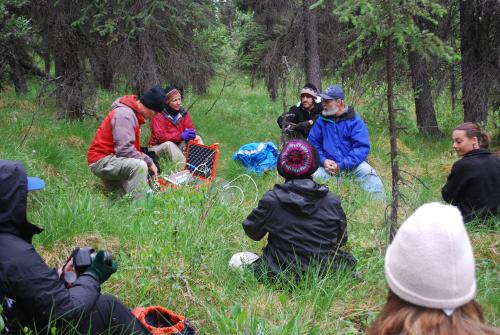
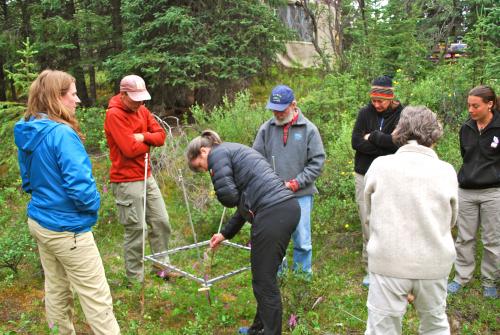
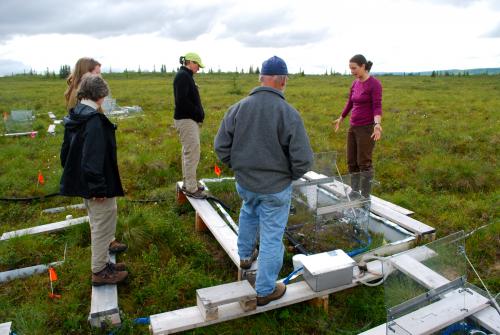
We had a great time, and I would like to thank all of the teachers that shared this experience with me. Jane, Sunny, and Joanne from the Fairbanks area. There was also Jillian from the Anchorage area and Mike all the way from Maryland. It was great to share and learn and meet new people and ideas that I know will make my classroom lessons even better!
Tomorrow I will share some the different sites we experienced during the course, including Mt. McKinley and seeing “the big five”.


Comments